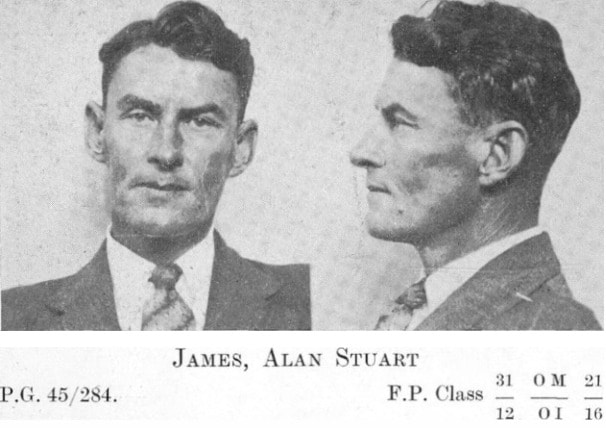|
The weeds in Alan Stuart James’ Motueka orchard worried him. He tried to keep on top of them, but they just kept coming back, and it played on his mind – constantly.
By his own admission, by 1944 James had become the living incarnation of Robert Louis Stevenson’s fictional murderer Dr Jekyll and Mr Hyde. Publicly, he was an accomplished musician, cross-country-skier, and tennis player. His orchard was sited on a lavish 16-acre property with a large house, tennis court and pretty gardens on the coastal road at Moutere Inlet. He taught Bible classes at his local church and was happily married with four young children. Privately, James was always worrying. As well as fretting over those ever-growing weeds, he was also having several affairs, constantly worried about his elderly widowed mother, worried about a Japanese invasion, and, worst of all, harboured thoughts of disposing of his family – which worried him also. James was born in Feilding in 1906 to Edwin Tako James, an architect, and Mary Georgina Farmer. Edwin purchased the orchard in about 1918 and after his death in 1936, James took over running it. It was the same year that James married 21-year-old Marjory Eleanor Nottage, the daughter of a neighbouring orchardist. Over the next nine years the couple had four children: Eleanor in 1937, Corran in 1940, Berwyn in 1941 and Alan jr in 1944. All seemed happy with the family – except that Marjory suffered from a throat complaint – something that added to James’ worries. Then Marjory fell pregnant again – which James later said was an “unfortunate accident” as they did not want more children. On November 13, 1944, the couple went to their doctor to see if "something could be done", but the doctor refused. Upset at the news, they returned home. Later that night James put the children to bed and sat down to play the piano. He later told police that while he had not decided what he was going to do. “I thought how lovely it would be to be free from all these worries." While he sat playing, he fretted over the effect the pregnancy would have on Marjory and, of course, all the work that he had to do in the orchard. Leaving the piano, he picked up a wooden club and attacked his wife inflicting massive head injuries and breaking her arm. His oldest daughter Eleanor heard the fracas and got out of bed, giving Marjory time to flee to the neighbour’s house. James, realising that the club would not do the job he wanted, loaded his shotgun and killed all four of the children. He was arrested and during his interview with police claimed he was perfectly sane. “I want you to understand that I am not mad like you think … I knew all that I was doing.” He later said: “I often thought I should have told someone of the Jekyll and Hyde life I was living but I could not do so. Me taking Bible Class and knowing I was not what I should be.” James was charged with murder and was remanded to an asylum. On February 15, 1945, he pleaded guilty to four charges of murder. It was the first time in New Zealand history that anyone had done so as, prior to a law change in 1941, which abolished the death penalty the first time, the law did not allow for anyone to consent to being executed. (The death penalty was reintroduced in 1949). He was sentenced to life imprisonment. By 1963, James was out of prison, working as a storeman and living in Auckland with a new wife, Mollie. He died in 1978 and was buried at Purewa Cemetery. Marjory gave birth to a son in 1945. She divorced James in 1951 and remarried. She died in 1996 aged 85 and is buried alongside her four children in Wakapuaka Cemetery in Nelson. Pic: NZ Police Gazette See our work:http://genealogyinvestigations.co.nz/index.html
0 Comments
Leave a Reply. |
AuthorFran and Deb's updates Archives
May 2025
Categories |

 RSS Feed
RSS Feed